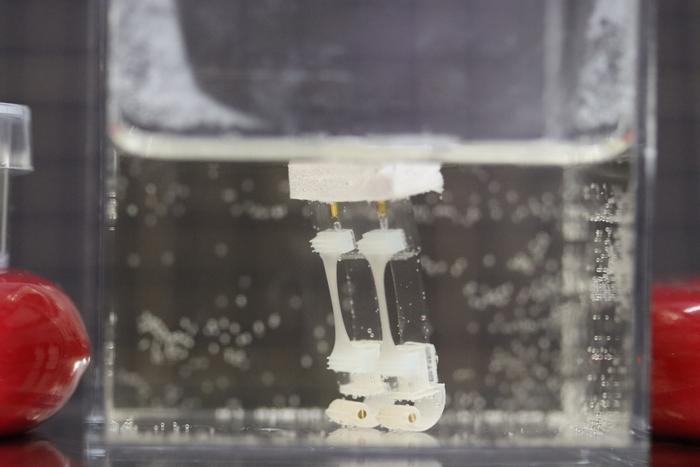A muscular robot, fire-retardant paint, a wireless drug delivery system and an astronomical metalens are among the latest engineering technologies on show in the world of innovation.
Innovation in Australia and across the globe continues apace – here are four of the latest engineering technologies and innovations.
Muscular robot
A two-legged robot developed at the University of Tokyo that operates in water can walk, pivot and make sharp turns thanks to actuators that use muscle fibres. Weighted legs and a buoyant foam top keep the robot standing while submerged, while its silicon rubber skeleton conforms to muscle movements.
The muscle fibres are lab-grown and contract when activated with electricity. Alternating the sparks permits the robot to walk at a speed of 5.4 mm per minute.

“Research on biohybrid robots, which are a fusion of biology and mechanics, is recently attracting attention as a new field of robotics featuring biological function,” Project Professor Shoji Takeuchi said. “Using muscle as actuators allows us to build a compact robot and achieve efficient, silent movements with a soft touch.”
The next step for the team is to incorporate thicker muscle tissue to allow for more powerful movement and structures that will allow the robot to operate in open air.
Fire-retardant paint
Engineers at the University of New South Wales have developed a fire-retardant paint able to withstand radiant heat levels up to 40 kW/m2.
Achieving the Bushfire Attack Level 40 standard, the paint is named FSA Firecoat and was developed over a five-year period with Flame Security International. The formula creates a char that remains in place during a fire and acts as a barrier.
“The special additives we include in the paint mix formula promote the growth of the char, which is the important insulating element,” Professor Guan Yeoh said. “The char is what helps the substrate, that is your house or your building, stay protected from the fire.
“In the rigorous tests you can see this char being created, but at the end you can just wipe it away and the wood underneath has virtually no damage.”
The paint is available commercially now and requires no special equipment to apply it.
Wireless drug patch
A drug delivery system developed at the University of North Carolina (UNC) can receive commands wirelessly and then release a drug dosage through individual microneedles.
Designed for wearability, the technology resembles a Band-Aid and could provide a more comfortable and convenient solution for chronically ill patients.
Taking instruction from a smart phone, the patch delivers highly localised treatment to specific organs or tissues in the body. Gold coating on the microneedles, which protects the drugs as well as human tissue, disintegrates when electrical stimulus is applied, releasing the medication.
“The beauty of this device is that it can house dozens, if not hundreds, of concentrated drugs and can program their sequential release automatically,” said Dr Juan Song of UNC’s Neuroscience Center. “Rapid drug release can be crucial in emergency situations or when immediate therapeutic action is required.”
Astronomical metalens
Harvard University researchers have created a glass metalens able to create high-resolution images of distant astronomical phenomena such as nebulae. The metalens, which focuses light using millions of pillar-like nanostructures, is 100 mm in diameter – much bigger than conventional glitter-sized metalenses.
This all-glass device, which can be mass-produced, was developed using deep-ultraviolet projection lithography, which involves projecting a nanostructure pattern on to a wafer, and then directly etching it into the surface.
“There is a major limitation with the lithography tool because these tools are used to make computer chips, so chip size is restricted to no more than 20 to 30 mm,” postdoctoral fellow Joon-Suh Park explained.
“In order to make a 100 mm diameter lens, we needed to find a way around this limitation.” The solution involved dividing the lens into 25 sections, allowing several patterns of nanopillars to be stitched together.